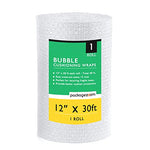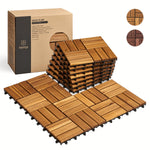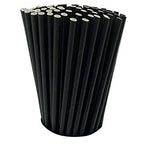You have no items in your shopping cart.
Have you ever seen a plant with leaves that resemble a work of art? The variegated monstera is a remarkable houseplant that features striking variegation on its leaves, making it a true showstopper. In this article, we will delve into the world of variegated monstera, exploring its origins, care tips, propagation methods, and more. So, grab your gardening gloves and get ready to discover the wonders of this extraordinary plant.
Variegated Monstera: A Marvel of Nature
Variegated monstera, scientifically known as Monstera deliciosa, is a captivating plant that boasts stunning variegation on its leaves. This variegation occurs due to a genetic mutation, resulting in patches or streaks of white, cream, or yellow on the foliage. The contrast between the variegated portions and the deep green areas creates a mesmerizing visual effect, making the variegated monstera a highly sought-after plant among collectors and plant enthusiasts.
Caring for Your Variegated Monstera: Tips and Tricks
Taking care of a variegated monstera requires some specific considerations to ensure its health and vibrancy. Here are some essential tips and tricks for nurturing your variegated monstera:
1. Proper Lighting: A Balancing Act
The variegated monstera has a unique requirement for light. While it thrives in bright, indirect light, excessive exposure to direct sunlight can scorch its delicate leaves. Strike a balance by placing your plant in a well-lit area with filtered light or a few feet away from a north or east-facing window.
2. Temperature and Humidity: Mimicking the Tropics
The variegated monstera hails from the tropical rainforests of Central and South America, so it appreciates warm and humid conditions. Aim to keep the temperature between 65°F and 85°F (18°C to 29°C) and maintain a humidity level of around 60-70%. Consider using a humidifier or placing the plant on a pebble tray filled with water to elevate humidity levels.
3. Watering Wisely: Moist, Not Soggy
Like most houseplants, the variegated monstera prefers a consistent watering routine. Allow the top inch (2.5 cm) of the soil to dry out between waterings to prevent overwatering, which can lead to root rot. Ensure the soil is moist but not soggy, and use well-draining soil to prevent waterlogged conditions.
4. Feeding Finesse: Nourishing Your Plant
To keep your variegated monstera healthy and thriving, provide it with regular doses of nutrients. During the growing season (spring and summer), fertilize once a month with a balanced, water-soluble fertilizer. Dilute the fertilizer to half the recommended strength to avoid overfeeding, which can harm the plant.
5. Supporting Growth: Trellising and Training
The variegated monstera is a climbing plant in its natural habitat. To encourage upward growth and create an impressive display, provide a sturdy trellis or moss pole for your plant to cling to. Gently guide the vines towards the support structure and secure them with soft ties or twine.
6. Pruning for Perfection: Shaping and Maintenance
Regular pruning helps maintain the variegated monstera's desired shape and promotes healthy growth. Trim away any dead, damaged, or yellowing leaves using clean, sharp scissors. Additionally, pruning can encourage the plant to produce fuller, bushier foliage, enhancing its overall appearance.
Propagation: Growing Your Variegated Monstera Family
Expanding your variegated monstera family is an exciting journey. There are two common methods for propagating this stunning plant: stem cuttings and air layering.
1. Stem Cuttings: Sharing the Beauty
Stem cuttings are a popular and straightforward way to propagate variegated monstera. Here's a step-by-step guide:
- Select a healthy stem with at least two nodes (the points where leaves emerge).
- Using a clean, sharp knife or shears, make a clean cut just below a node.
- Remove the lower leaves, leaving at least two or three on the upper portion of the cutting.
- Dip the cut end in a rooting hormone to encourage root development (optional).
- Place the cutting in a jar or vase filled with water, ensuring the nodes are submerged.
- Keep the cutting in a warm, bright location and change the water every few days.
- Once roots have developed (typically in a few weeks), transplant the cutting into a pot with well-draining soil.
2. Air Layering: A More Advanced Approach
Air layering is a technique that allows you to propagate variegated monstera while the cutting is still attached to the parent plant. Though it requires a bit more effort, it can yield excellent results. Here's how to do it:
- Identify a healthy, mature stem on the variegated monstera.
- Make an upward, slanted cut on the stem, approximately one-third of the way through.
- Dust the cut area with rooting hormone to promote root growth.
- Wrap the cut section with moist sphagnum moss, ensuring it covers the exposed area completely.
- Secure the moss with plastic wrap or aluminum foil, creating a seal around the stem.
- Wait for roots to develop within the moss, regularly misting it to maintain moisture.
- Once roots are visible (usually after a few weeks), carefully cut below the air layering and pot it in well-draining soil.
By following these propagation methods, you can share the beauty of variegated monstera with fellow plant enthusiasts or expand your own collection.
FAQs: Common Questions About Variegated Monstera
1. Can I grow a variegated monstera from seed?
No, variegated monstera plants are typically propagated through stem cuttings or air layering. Due to the rarity and instability of the variegation, it is highly unlikely to achieve the same variegation patterns from seeds.
2. Why are variegated monstera plants more expensive?
Variegated monstera plants are more expensive due to their rarity and high demand among plant collectors. The variegation mutation occurs randomly and is unstable, making it challenging to produce consistent variegated specimens. As a result, the supply of variegated monstera is limited, leading to higher prices.
3. How often should I repot my variegated monstera?
Variegated monstera plants generally require repotting every 1-2 years, or when the roots become cramped and start to outgrow the current container. When repotting, choose a pot that is only slightly larger than the previous one to avoid excess soil moisture retention, which can lead to root rot.
4. Can I grow a variegated monstera outdoors?
Variegated monstera plants are primarily suited for indoor cultivation, as they are more sensitive to temperature fluctuations and direct sunlight. However, in tropical or subtropical climates, they can be grown outdoors in shaded areas or under the protection of larger trees.
5. How do I maintain the variegation on my variegated monstera leaves?
Variegation in variegated monstera leaves can vary in stability. To maintain the variegation, provide the plant with adequate lighting, avoid direct sunlight, and follow proper care practices, such as appropriate watering and fertilization. Additionally, avoid excessively pruning the variegated sections, as this can disrupt their growth.
6. Are variegated monstera plants toxic to pets?
Yes, variegated monstera plants are considered toxic to pets, including dogs and cats. The plant contains calcium oxalate crystals, which can cause oral irritation, excessive drooling, difficulty swallowing, and gastrointestinal upset if ingested. Keep your variegated monstera out of reach from curious pets or opt for pet-friendly alternatives.
In Conclusion
The variegated monstera is a true masterpiece of nature, with its unique and captivating leaf variegation. By providing the right care and attention, you can enjoy the beauty of this extraordinary houseplant in your own home. Whether you're a seasoned plant collector or a beginner gardener, the variegated monstera is sure to add a touch of elegance and wonder to any space. So, go ahead and welcome this botanical work of art into your plant family and witness the beauty that unfolds.








